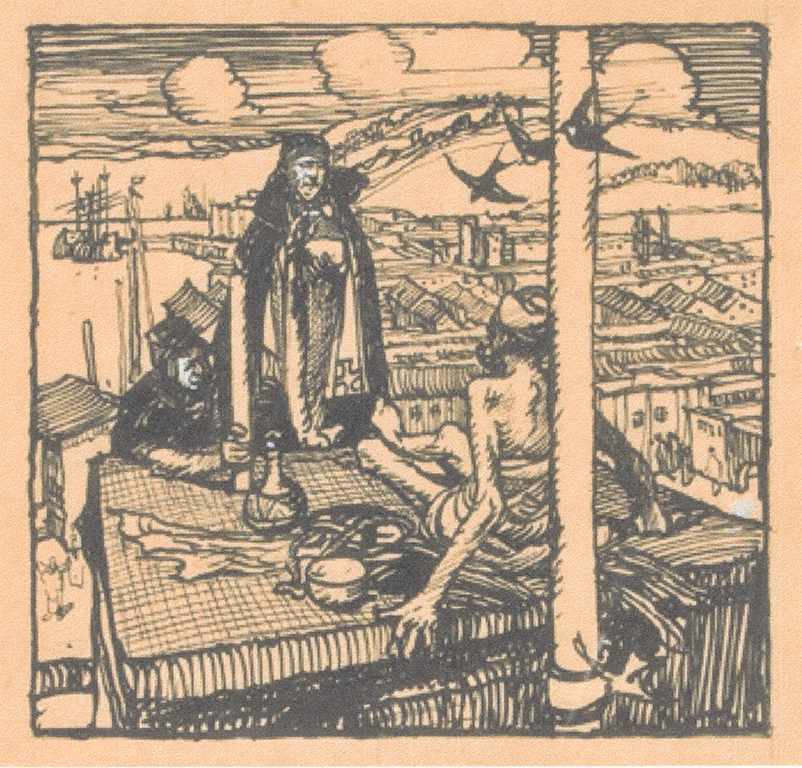
SIGNATURES
In the early years Brangwyn tended to sign his name in fairly large capital letters (a form of advertising perhaps) but as his fame increased so his need to sign works decreased and much of the time he didn’t even bother and had to be reminded by assistants. In later years William Belleroche insisted that Brangwyn sign every work which entered the younger man’s collection, with the result that some early works have a much later signature. Anyway, here’s a sample signature and monogram to be going on with. Brangwyn’s signatures always look as if they were written quickly, they weren’t studied, you can almost see his heartbeat, so if a signature looks studied it’s wrong. And he rarely added the initial downstroke to the capital B.
There appears to be a significant market in fake Brangwyns sold through auction houses or on the web. If you are the least bit suspicious about a work then check the signature, question the provenance, ask an expert’s advice or contact me by email.


COLLABORATIVE WORK
Although Brangwyn did cut his own woodblocks he also collaborated with a number of other artists and wood engravers including William Belleroche, C W Moore, W M R Quick, H G Webb (see below) and the Japanese printmaker Yoshijiro Urushibara. Brangwyn employed these men when he was short of time but the engagement was also philanthropic in that he liked to help fellow artists without appearing to dispense charity.
Brangwyn’s greatest collaboration was with Yoshijiro Urushibara who was born in Tokyo in 1888 and learnt the arts of carving and printing woodblocks as a youth. Between 1908 and 1934 he divided his time between Paris and London, worked with a number of British artists, making woodblocks from their drawings and watercolours. Brangwyn and Urushibara became firm friends and collaborated on 3 books: Bruges, London, 1919, illustrating six poems by Laurence Binyon; Ten Woodcuts by Yoshijiro Urushibara, London, 1924 and Leaves from the Sketch Books of Frank Brangwyn, Leigh-on-Sea, 1940.
Yoshijiro Urushibara, A Japanese Printmaker in London. A Catalogue Raisonné by Hilary Chapman and Libby Horner was published by Hotei in 2017 – https://brill.com/display/title/34584?rskey=a2xjEa&result=8
It is highly likely that many of the wood engravings attributed to Brangwyn are in fact the work of his collaborators.
The collaborations are detailed and illustrated in Brangwyn’s Big Prints Book – Bookplates and Collaborations – pages Q62-Q101.
H G Webb



St Simon Stylites
Left: St Simon Stylites 2 (O152), 1894, 208.3×111.8cm, oil, Museo d’Arte Moderne, Venice. Image from The Studio, Little Stanley, ‘Frank Brangwyn and his art’, Vol 12, No 55, October 1897, p8
Right: St Simon Stylites (Q5282), wood engraving by H G Webb after Brangwyn.
The saint sits on a platform high above the ground, attended by two prelates. Distant view of town and harbour, the life the saint had renounced. Swallows flitting by enhace the feeling of height.
Simeon (c390-459) was a Christian who spent 37 years living on a platform above a 22M pillar near Aleppo. The Greek word ‘style’ means pillar.